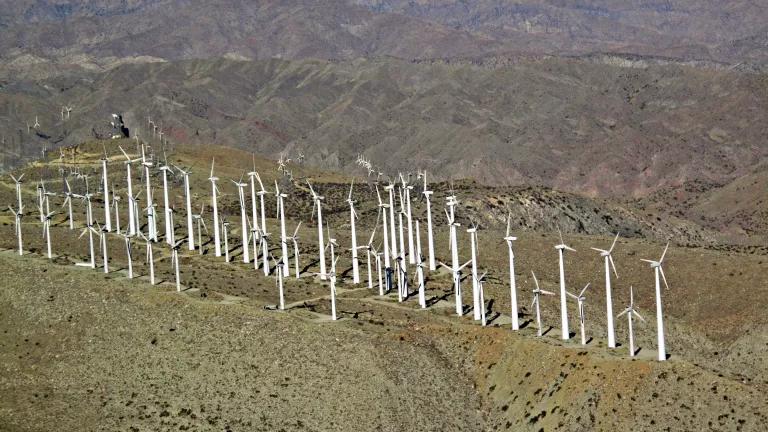Western EIM Expands, Electricity Markets Outlook Brightens
An expanded EIM will help make the western grid cleaner and greener.

An expanded EIM means faster renewable development, photo by Carl Zichella
Carl Zichella
The California Independent System Operator (CAISO) has welcomed two new market participants to its Western Energy Imbalance Market (EIM), which means it will soon include about three-fourths of the electrical load in the entire Western Interconnect serving all or parts of 14 states.
The decisions by the Balancing Area of Northern California (BANC) and the Sierra Nevada Region of the Western Area Power Administration (WAPA) to join Sept. 5 as part of the expansion of market participation in an EIM is a strong indicator that acceptance of the value of a west-wide energy market is increasing. This is especially true when new publicly owned utilities (POUs) and now a Federal Power Marketing Administration, WAPA, want to be part of the EIM.
For western utility customers these markets mean lower costs, cleaner energy and a more efficient use of the grid, which is currently encumbered by a lack of efficient system-wide coordination.
A west-wide energy market would choose the least cost generation available to meet the expected energy needs of the system in every hour of the next day. If the forecast proves incorrect, the difference—“imbalance”—is covered by the EIM. Because the EIM also uses least-cost energy resources to meet last-minute energy balancing needs renewable energy sources, which have low to no marginal costs are most likely to be used.
There was a time not so long ago when suggesting that POUs would join an Independent System Operator (ISO) market of any kind would have gotten you laughed out of the room. No more. The EIM sells itself, having garnered more than $736 million in benefits for its participants since it launched in 2014 with a single member, PacifiCorp. Regardless of the utility business model, the EIM works. Benefits continue to increase as more participants join the market and more transmission is made available.
In fact, the region’s (and some of the nation’s) largest POUs have signed agreements to join the Western EIM, including the Los Angeles Department of Water and Power, The Arizona-based Salt River Project, Seattle City Light, and now BANC. BANC is a Joint Powers Authority (JPA) consisting of the Sacramento Municipal Utility District (SMUD), Modesto Irrigation District (MID), Roseville Electric, Redding Electric Utility (REU), Trinity Public Utility District (TPUD) and the City of Shasta Lake.
What is even more remarkable is that a WAPA Region is joining the Western EIM. WAPA has been adamantly opposed to joining a CAISO market, ostensibly over fears that transmission costs would rise for its customers. But the Western EIM relies on unused transmission capacity inside the hour to facilitate the “real-time” trades, relieving the concern that regional tariffs would increase WAPA costs. WAPA joins the Bonneville Power Administration (BPA) in expressing an intention to join the EIM, and their eventual participation will mean that the vast majority of the West’s electricity demand (up to 77 percent including BPA) will be represented by entities participating in the EIM. That makes future market development, including a region-wide wholesale day-ahead market something of an inevitability.
As we reported last month, several key trends now favor a full region-wide energy market, including state climate goals, declining renewable energy costs and keen interest in western reliability coordination (RC) services offered by CAISO (RC West), among others.
The CAISO announced in September that it was launching a stakeholder proceeding on establishing a day-ahead companion market to the EIM called the extended day ahead market (EDAM). Interest in the EDAM is further evidence, if any were needed, that regional coordination through market participation is now viewed favorably as an opportunity to more cost-effectively serve customers and enhance reliability. The stakeholder process will begin in October 2019.
It was the EIM participants themselves who urged the CAISO leadership to consider implementing an EDAM) in a September 16 letter. Fourteen current and future EIM entities, in addition to CAISO, had participated in an eight-month assessment to determine if an EDAM would provide enough benefit to justify taking the necessary steps to implement one. Those studies forecast that a day-ahead market could generate aggregate gross benefits between $119 million and $227 million annually.
Participation in the CAISO’s RC West is yet another key indicator that interest in a region-wide market is likely to grow. Nothing builds confidence in coordination like success in keeping the lights on. The CAISO’s Western RC function allows for a centralized ability to see what is happening in the entire western grid at any given moment, and to alert balancing authorities to respond instantaneously to system failures like the unexpected loss of transmission or a generator. Fully 87 percent of the western electricity load will be represented by RC West participants as of November 1.
Welcome to the Western EIM, BANC and WAPA. Your participation will save your customers money and help make the western grid cleaner and greener. Everyone wins.



